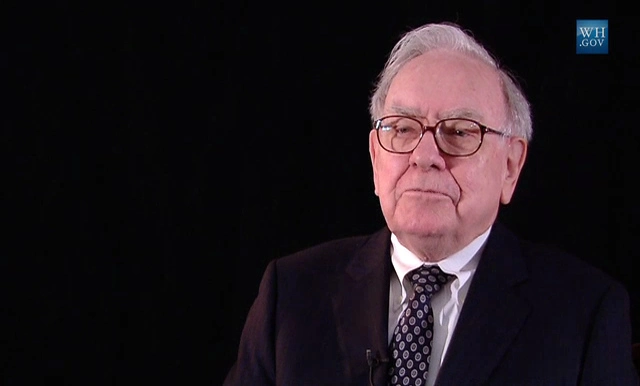Should you invest in stocks for retirement?
When considering how to save for retirement, you have several options. You can put money into a savings account, purchase real estate, buy government or corporate bonds, or invest in stocks (shares of ownership in a corporation). It’s common to wonder whether investing in the stock market when planning for retirement is a good idea.
Investing in stocks can often help you earn more than other retirement options, depending on how much risk you’re willing to take. In this article, we’ll discuss the advantages and risks of investing in the stock market to help you determine whether it’s a good option. We’ll also provide tips to help you mitigate risk and build a diversified retirement plan.

Advantages of investing in stocks
Historically, stocks produce more significant returns than other asset classes, like cash or bonds. The average stock market return is 10 percent yearly, while government bonds generally return between five and six percent. This means that you have a better chance of receiving more when you retire by investing in stocks and are more likely to beat inflation. Remember, though, that short-term dips do happen in the stock market. If you are still decades away from retiring, though, this should not scare you away from investing in stocks because these dips tend to be short-term.
Capitalize on the advantages by following Warren Buffett’s investment strategy
Warren Buffett, known as the “Oracle of Omaha,” is the CEO and chairman of Berkshire Hathaway. He is widely considered the most successful investor of the 20th century and amassed a large personal fortune by following three primary investment principles.

Principle 1: A stock should be evaluated as a slice of a company’s profits far into the future
Buffett does not look at a stock as a ticker symbol with a price that goes up and down. Instead, he looks at stocks as slices of future profits. When choosing stocks, he looks for companies that meet the following criteria:
- Buffett can understand how the company will make money far into the future.
- The company has favorable long-term prospects because it has a sustainable competitive advantage, such as low prices, quality products, proprietary technology, or a well-known brand built through years of advertising.
- Honest, transparent, and competent people operate the corporation.
- The stock is available at an attractive price.
Principle 2: The stock market is there to serve you, not instruct you
According to Buffett, many investors think that when stock prices fall, the market is telling them that they made a mistake. As a result, they may sell their stocks at a lower price. But Buffett buys stocks because he thinks the company will be successful in the future and keeps the market from convincing him otherwise. He even goes so far as to say that volatility can be a good thing because there will be a greater chance that the stock market made a mistake and the stock will be worth more later.
Principle 3: Maintain a margin of safety
Buffett recommends buying a stock when the market price is below its intrinsic value, which is the present value of all cash the business will make in the future.
Risks of investing in stocks
Even when following Warren Buffett’s investment strategy, investing in stocks is still somewhat risky because you cannot predict what the stock market will do from year to year. Moreover, if your primary tool for retirement saving is stock investment, your disbursements will depend on the size of your contribution and the success of the stocks you purchase. If you only make a small contribution, you may not earn much on the stock market. If you invest poorly, you could have smaller retirement disbursements or even lose money.
You may also have to pay significant taxes when you retire and begin to sell your stocks. To learn more, read our article “What retirement means for your personal taxes.”
1. Risk of losing money
Although stocks produce better returns than other asset classes, they also carry a greater risk of short-term losses. There are two primary ways you can lose money when investing in the stock market:
- The stocks decline in value. A stock may decrease in value. If you hold onto your stock for an extended period, you give the stock more time to recover. If you retire in the next few years, you can lose a lot of money.
- You sell stocks too soon. You might sell too quickly because you’re impatient and don’t give your shares a chance to rebound after declining in value. Or you may panic and sell stocks because the market is declining.

2. Market downturns can affect your retirement plans
It’s not uncommon for investors to experience losses in the stock market. Since World War II, there have been more than a dozen bear markets, which are periods of sustained decline of about 20 percent in investment prices. If you plan to retire within a few years, declines in the stock market could be detrimental to your retirement earnings. But if you are still decades away from retirement, then you have the potential to overcome these downturns and earn your money back.
Tips for mitigating risks when investing in stocks
1. Diversify your stock portfolio
When investing in stocks, you mustn’t put all your eggs in one basket. Instead, invest in various companies across multiple sectors, industries, and regions to reduce your overall level of risk.
Consider investing in an index fund like the S&P 500. An index fund is a mutual fund or exchange-traded fund that consists of a portfolio that matches or tracks the components of a financial market index. In general, index funds are low-cost and provide a diversified portfolio.
2. Invest regularly
By investing in the stock market regularly, instead of putting in a large lump sum at once, you can help smooth out fluctuations. You will have the opportunity to purchase more shares of a stock when the prices are low when investing regularly.
3. Invest for the long-term
When you sell a stock as soon as it starts to decline, you risk losing a significant sum of money. Instead, follow Warren Buffett’s advice and plan to hold onto your stocks for longer. This gives your investments time to rebound and benefit from potential future growth.
How to strike a balance between risk and reward when investing in stocks for retirement
There are different levels of risk you may be comfortable with :
- Lower risk: You’re prepared to take a modest risk knowing that the potential returns may be lower and only keep up with inflation.
- Medium risk: You are comfortable with moderate risk because you may see higher returns than inflation. You also accept that there may be ups and downs.
- Higher risk: You’re comfortable with higher levels of risk because you want significantly higher returns, but you’re aware that the value of your stock investments may fluctuate considerably.
Generally, the higher the risk, the bigger the potential return. You should combine higher-risk strategies with lower and medium-risk investments to increase your chances of seeing a higher return on your investments while mitigating risk. This helps you strike a balance between risk and reward.
To help determine the right balance, calculate the risk-reward ratio for your investments. A risk-reward ratio is the expected reward you can earn for every dollar you risk on an investment. An appropriate risk-reward ratio is anything greater than 1:3. A ratio of 1:3 means that you should expect to invest $1 to earn $3 on that investment.
How to build a diversified retirement portfolio
There are three main asset classes you can invest in for your retirement portfolio: stocks, bonds, and cash or cash equivalents. Stocks tend to be the riskiest, and cash or cash equivalents tend to be the least risky. The most robust retirement portfolios typically have a mix of all these asset classes because you take enough risk with stocks to give your money a chance to grow. But a diversified retirement portfolio will protect you somewhat from significant downturns in the stock market because you have bonds and cash available, too.
The mix of stocks, bonds, and cash will typically change as you age because your risk tolerance decreases, and you will need access to the money sooner. You risk losing your money if you’re just a few years from retirement and the stock market declines. Because of that, you should consider placing the money you need in the near future in safer investments like cash and bonds.
To help ensure you have the right mix, you can follow the old rule of thumb where you subtract your age from 100 to determine the percentage of your retirement portfolio you should keep in stocks. For example, if you’re 30, 70 percent of your portfolio should be in stocks. But if you’re 70, you should only keep 30 percent of your portfolio in stocks. As Americans live longer and longer, some financial planners recommend subtracting your age from 110 or 120 to determine the right mix.
Should real estate be part of your retirement portfolio?
Consider investing in real estate when building a diversified retirement portfolio. It’s important to remember that real estate tends to be relatively illiquid, and it might be challenging to sell the asset when you’re ready to retire. To learn more, read our article “The best strategies for real estate investinghttps://srsr.io/retire/wealth-management/how-to-create-your-retirement-plan/.”
Conclusion
In conclusion, investing in stocks for retirement can be a good strategy if done correctly. It is essential to understand the advantages and risks associated with investing in the stock market and to have a well-diversified portfolio. Following the investment principles of successful investors like Warren Buffett can help mitigate risk and increase the chances of earning significant returns. Remember, investing in stocks is not a get-rich-quick scheme; it requires patience, discipline, and a long-term outlook. Following the tips and guidelines discussed in this article, you can create a solid retirement plan that includes stocks to help you achieve your financial goals.

